Swedish moose crash-test dummy wins spoof Ig Nobel prize
- Published
Watch: A moose collision will inflict serious damage on the passenger compartment
An innovation to improve safety on the roads for Swedish drivers has won one of this year's Ig Nobel prizes.
The moose crash-test dummy was developed by IT engineer Magnus Gens to see how cars would crumple when they collided with big wildlife.
The annual spoof awards for quirky science are supposed to "make us laugh but then make us think".
Although to be honest, the more you think about it, there is not much that is humorous about fatal accidents.
Magnus won the Safety Engineering Ig Nobel.
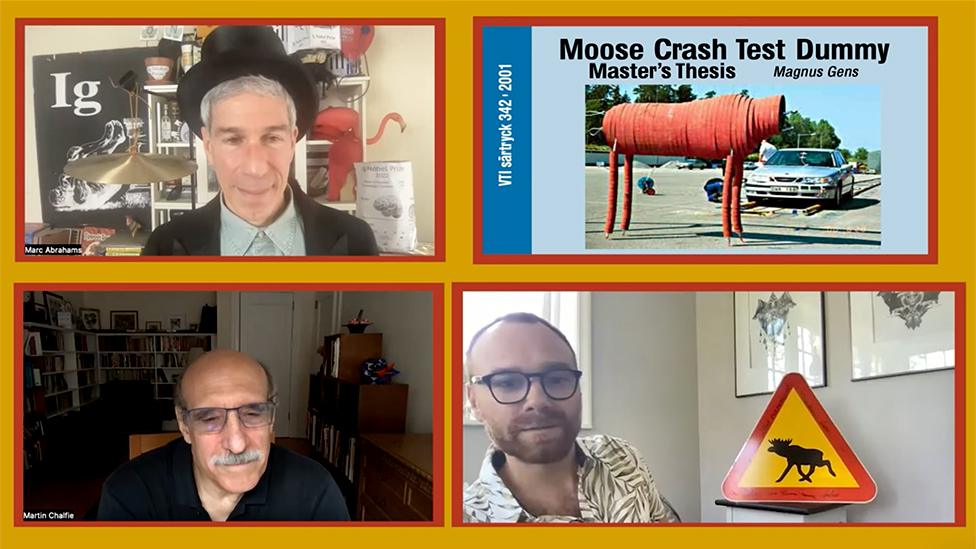
Magnus Gens (bottom-right) received his award from 2008 Chemistry Nobel Laureate Martin Chalfie (bottom-left)
Other awards this year included a Literature Prize for research that examined the impenetrability of legal documents; and a Physics Prize for the study that sought to understand formation swimming in ducklings.
The science humour magazine, the Annals of Improbable Research,, external hands out the Ig Nobel awards.
The ceremony is a light-hearted affair that is usually put on at Harvard University in the US, but for the last few years has been conducted through a webcast because of Covid concerns.
Magnus and his fellow Ig Nobel laureates received their awards virtually - from real Nobel Laureates, as has become the custom.
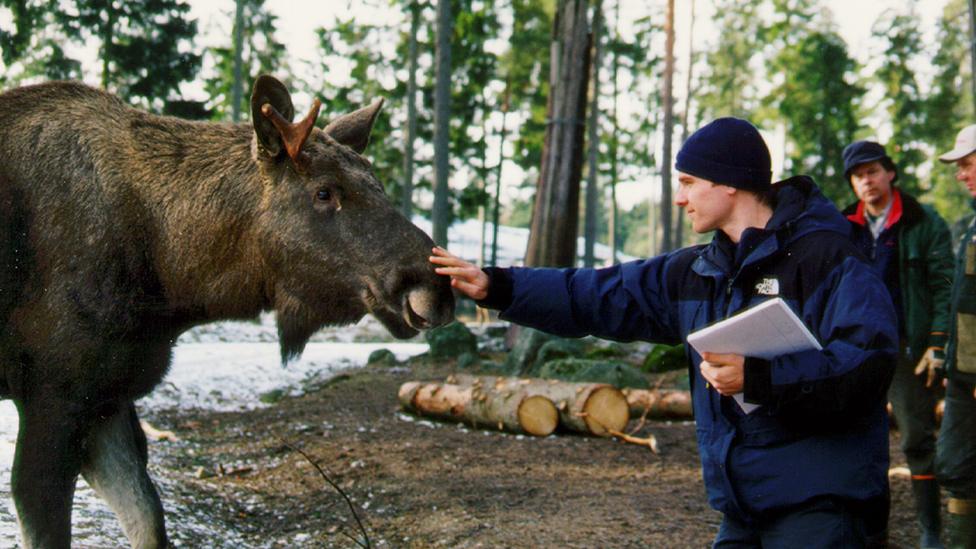
Magnus had to learn about moose anatomy
The number of moose, or elk, collisions in Sweden each year is thought to run into the thousands. Ten or more of these will result in the deaths of the vehicle occupants.
Magnus told BBC News he was proud of his award and the renewed focus it put on his research, which was actually conducted a decade ago as the topic of a Master's thesis., external
"It's certainly been fun and intriguing for me to reopen the thought processes from that time," he said.
Magnus first had to study the anatomy of the moose to make a dummy that would replicate a real-world animal; not just its size and shape but also the varying density across its body.
His "moose manikin" was eventually constructed from a series of thick rubber plates and slung from a frame by wires. Cars were driven into it at various speeds.
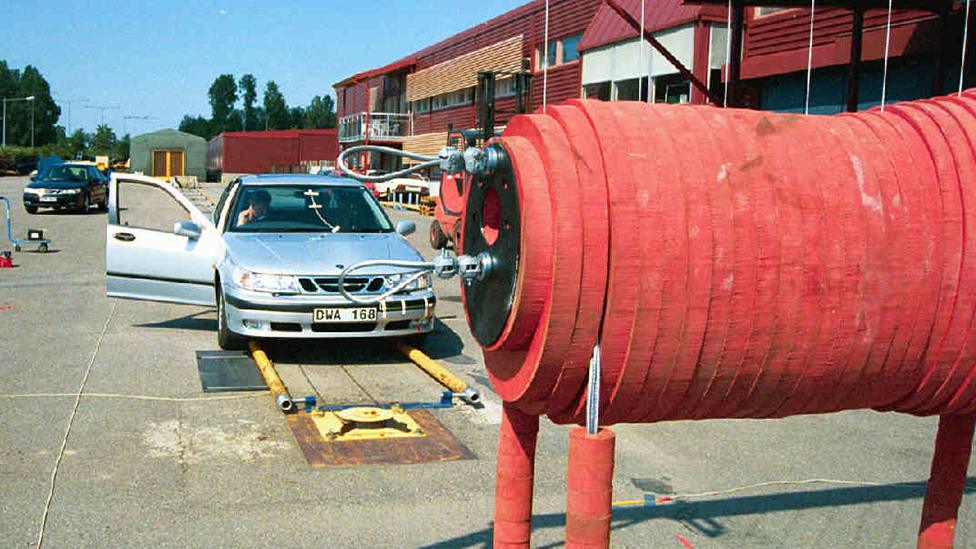
The dummy was constructed out of thick rubber plates, cut to shape
Slow-motion video was used to capture the damage process.
"A moose will weigh something like 250kg (550lb) or 300kg, but the car weighs maybe 2,000kg. And what this means is that the automobile doesn't slow down enough on impact for the airbags to be triggered," Magnus recalled.
"It's a terrible impact. You will see the windshield explode and all of the glass will end up in the lap and in the face and in the torso of the passengers in the front seat. And it almost tears the roof off the car."
A number of vehicle manufacturers picked up his moose dummy design for follow-up experiments.

Here's a full list of the 2022 Ig Nobel winners. Each team received a cash prize - of a 10 trillion dollar bill from Zimbabwe, and a paper trophy. This trophy came as a PDF document that could be printed and assembled to make a three-dimensional gear with teeth. The gear teeth were pictures of human teeth.
Applied Cardiology Prize: Eliska Prochazkova and colleagues, for seeking and finding evidence that when new romantic partners meet for the first time, and feel attracted to each other, their heart rates synchronize.
Literature Prize: Eric Martínez and colleagues, for analysing what makes legal documents unnecessarily difficult to understand.
Biology Prize: Solimary García-Hernández and Glauco Machado, for studying whether and how constipation affects the mating prospects of scorpions.
Medicine Prize: Marcin Jasiński and colleagues, for showing that when patients undergo some forms of toxic chemotherapy, they suffer fewer harmful side effects when ice cream replaces one traditional component of the procedure.
Physics Prize: Frank Fish and colleagues, for trying to understand how ducklings manage to swim in formation.
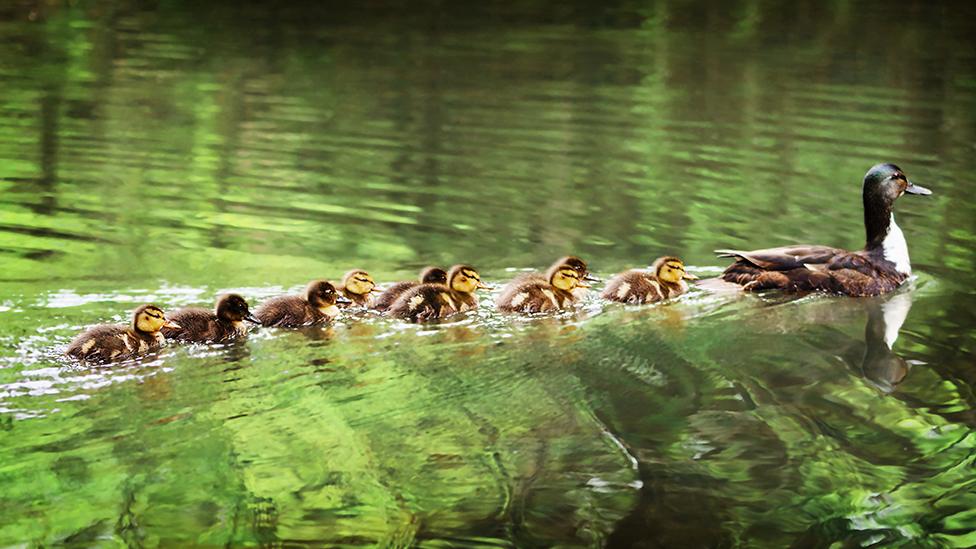
It has long been recognised that ducklings/goslings will follow their mother in formation
Engineering Prize: Gen Matsuzaki and colleagues, for trying to discover the most efficient way for people to use their fingers when turning a knob.
Art History Prize: Peter de Smet and Nicholas Hellmuth, for their study "A Multidisciplinary Approach to Ritual Enema Scenes on Ancient Maya Pottery".
Peace Prize: Junhui Wu and colleagues, for developing an algorithm to help gossipers decide when to tell the truth and when to lie.
Economics Prize: Alessandro Pluchino and colleagues, for explaining, mathematically, why success most often goes not to the most talented people, but instead to the luckiest.
Safety Engineering Prize: Magnus Gens, for developing a moose crash-test dummy.
Related topics
- Published9 September 2021
- Published17 September 2020
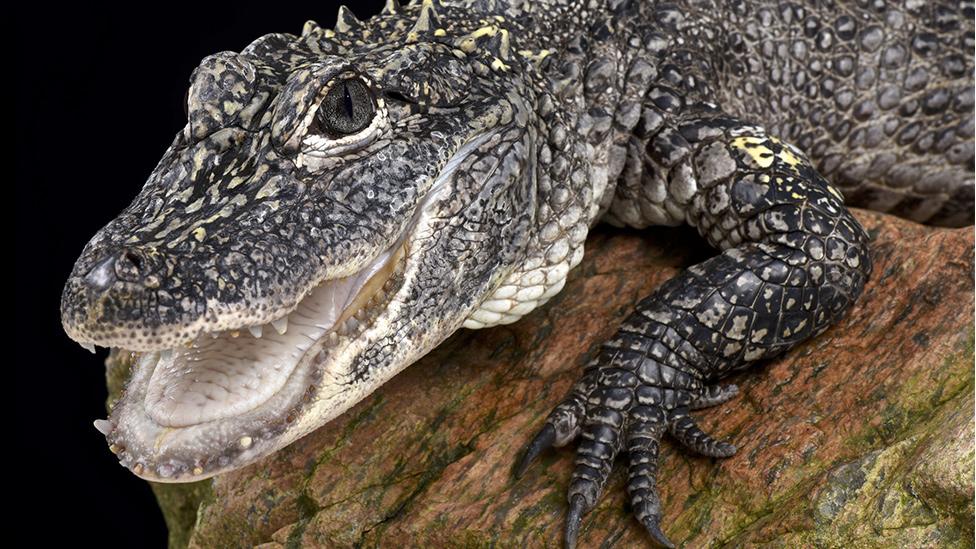
- Published13 September 2019
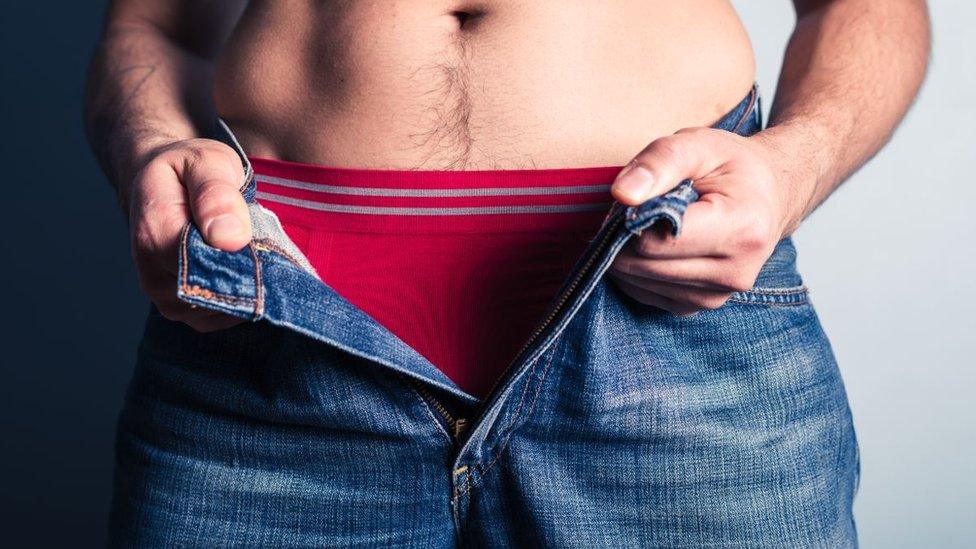
- Published14 September 2018

